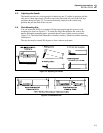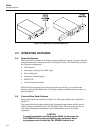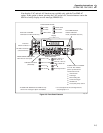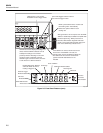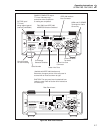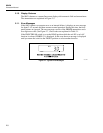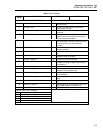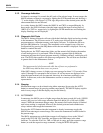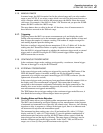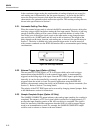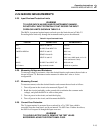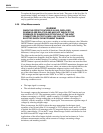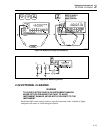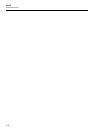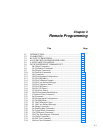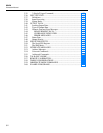
Operating Instructions
OPERATING FEATURES
2
2-11
2-16. MANUAL RANGE
In manual range, the 8842A remains fixed in the selected range until you select another
range or press AUTO. If you select a range which is not valid for the present function, or
select a function which is not valid for the present range, the 8842A selects the nearest
valid range. For example, if the 8842A is in the VDC function and you press the 20 MΩ
button, the 8842A selects the 1000V range.
The range buttons have no effect in the mA AC functions, since all measurements in
these functions are made in the 2000 mA range.
2-17. Triggering
Triggering causes the 8842A to execute a measurement cycle and display the result.
During each measurement cycle, the instrument samples the input a number of times and
then averages the samples to compute a reading. The number of samples averaged for
each reading depends upon the reading rate.
Each time a reading is triggered, the rate annunciator (S, M, or F) blinks off. In the fast
reading rate, the F annunciator flashes so rapidly it appears to be almost constant.
How the 8842A is triggered depends on whether the continuous trigger mode or external
trigger mode is selected. Pressing the EX TRIG (external trigger) button toggles the
8842A between the two modes.
2-18. CONTINUOUS TRIGGER MODE
In the continuous trigger mode, readings are triggered by a continuous, internal trigger.
The rate of the trigger is set by the RATE button.
2-19. EXTERNAL TRIGGER MODE
In the external trigger mode, readings are triggered by pressing the TRIG button. If the
IEEE-488 Interface option is installed, readings can also be triggered by remote
commands or by using the rear panel external trigger (EXT TRIG) connector. (See the
Options and Accessories section.)
In the external trigger mode, pressing any front panel button blanks the numeric field on
the display until a new measurement is triggered. This ensures that all readings
correspond to the instrument configuration indicated by the display annunciators. The
blanking also occurs in the continuous trigger mode, but usually isn’t noticed because
new measurements are triggered automatically.
The TRIG button does not trigger readings in the continuous trigger mode.However, it
does blank the last reading to acknowledge a button was pressed.
2-20. Reading Rates and Noise Rejection
The RATE button allows you to optimize either measurement speed or noise rejection.
The 8842A uses both analog and digital filtering to allow measurements in the presence
of unwanted environmental noise (especially line-related noise). However, since filtering
introduces a delay in response to a change in the input signal, there is an inherent trade-
off between noise rejection and measurement speed.
The instrument has three reading rates: slow (S) and medium (M), with a 5-1/2 digit
display, and fast (F), with a 4-1/2 digit display. To provide optimum combinations of
measurement speed and noise rejection, the RATE button allows control of both the
internal trigger rate and the degree of filtering. The same degree of filtering is used in
both the continuous and external trigger modes. In the 20 mV, 20Ω, and 200 mA dc
ranges, use of slow (S) filter provides maximum noise rejection.



